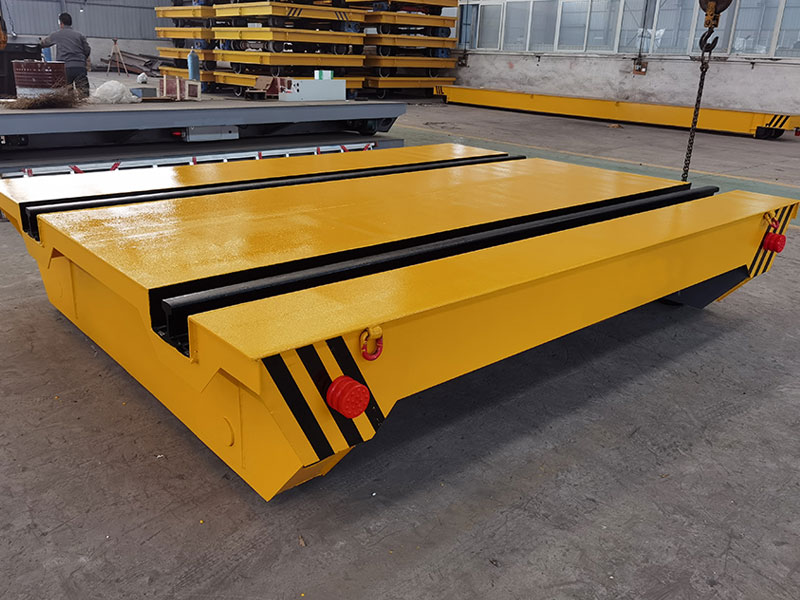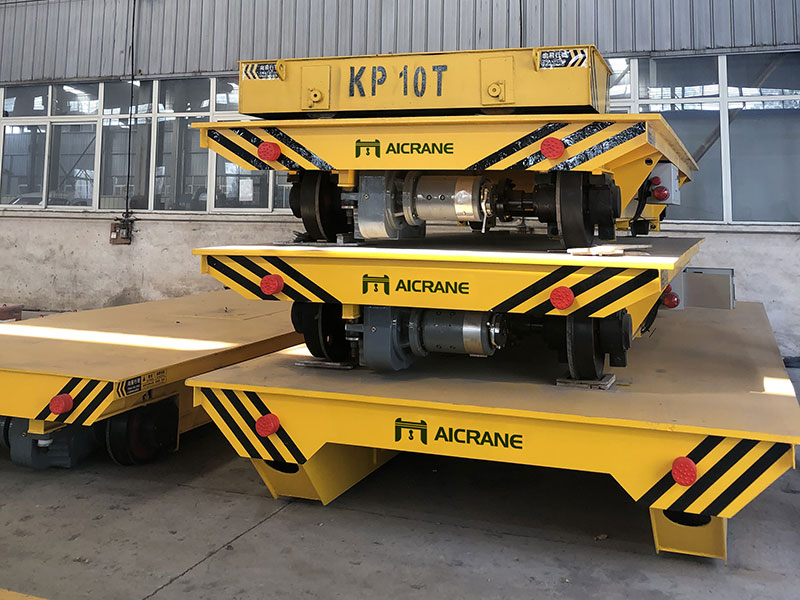A rail transfer cart is a versatile device with a compact structure and large loading capacity. It is widely used in many industries and places for transportation of materials. Ergonomic transfer carts are great alternatives to forklifts and overhead cranes for many different tasks. They can also be more convenient for operators, improving safety and efficiency. Let’s take a look at some of the common uses of a rail transfer cart.

Functions
A rail transfer cart is a motorized tool used for material transportation. It is known by several names, including motorized transfer cart, self-propelled die transporter, electrical flat cart, and rail transfer trolley. Its basic functions include carrying large machinery and heavy loads. These carts are available in a variety of sizes and can be customized according to the application requirements of the client. They are highly durable and can run on curved rails.
Benefits
A rail transfer cart has many benefits over a standard wheelchair. One of these advantages is that the transfer cart is easily disassembled and reassembled. A rail transfer cart also runs over an unlimited distance without any restrictions, which means you can move as much as you need without paying for labour. Additionally, the transfer cart for sale has a sturdy steel frame, which is resistant to bending or deformation, and rubber tires.
Frame
A rail transfer cart is an electric-powered material-transporting vehicle that is used for transporting heavy loads. It features an electric control system that consists of a conductive transmission device, a warning lamp, and a control switch. The frame of the cart is designed to be lightweight and sturdy and is equipped with lifting holes for easy loading. This cart’s structure also makes it ideal for heavy industrial applications. You can also find low-voltage models for light duty applications.

Wheels
Rail transfer carts need wheels that support their weight. They can be divided into two basic types: single and double-rim wheels. Single-rim wheels are used for electric transfer trolleys and other types of heavy machinery. The process of producing a rail flat car’s wheels is highly specialized and requires skilled workers. This article will give you an overview of these two types of wheels. You can use them to make the most durable and effective rail transfer carts on the market.
Traction bar
The traction bar on a rail transfer cart is a common rail-mounted accessory for trucks. Most new truck owners have no idea what traction bars are. If you are not familiar with these bars, you may be wondering if you need one. This article will explain what they are, how they are used, and when you should install them. The first step in installing a traction bar is to measure the rail-mounted cart.
Safety
The rail transfer trolley allows you to move heavy objects on the ground, instead of having to use cranes and cables. This is particularly useful when you need to transfer large, delicate objects. You can’t move them in an aerial position, so you must be sure that they’re handled safely on a flat surface. Rail transfer carts are perfect for this. They’re slow and stable, and can make several trips on their own.
Suitable for transporting heavy loads
A rail transfer cart is an excellent solution for heavy-duty materials, such as construction and mining materials. It operates on rails, allowing it to easily roll along the floor. The battery transfer carts are commonly used to move material between different points, such as between factories and warehouses. Omnitrack invented the heavy-duty ball transfer units and designed them to run on rails. They are capable of handling all types of weight, and they are easy to operate. The payloads of these carts can reach up to 500 tons.
Cost
A rail transfer cart is a material handling equipment that is powered by rails and is used to transport heavy materials and cargo. These types of carts can be either manual or powered by AC or DC. They also work as motorized transfer trolleys and are useful in a wide variety of industrial settings. Cost of rail transfer carts can range anywhere from a few thousand to several million dollars.